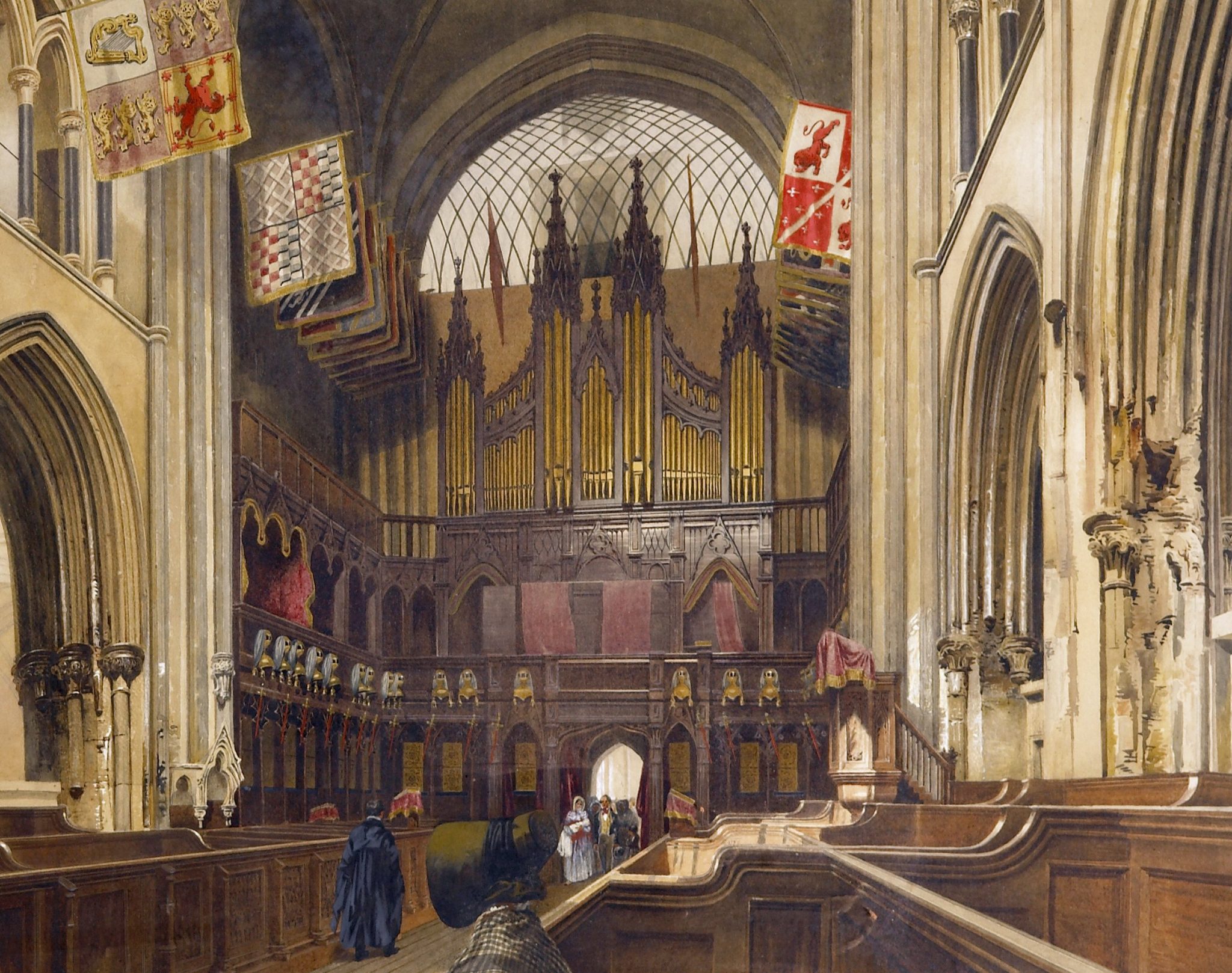The Cathedral Organ
May 26, 2016 Posted in: Cathedral History, Music

The earliest record of an organ in Saint Patrick’s is in 1471 when Archbishop Tregury bequeathed ‘a pair of organs’ for use in the Lady Chapel. During the next two centuries there are various records of payments to organists. Of the many organs in Saint Patrick’s Cathedral, the most visually impressive must have been that of Renatus Harris in 1697, built on a screen dividing the nave from the choir, an earlier plan in 1678 having come to nothing. It was completed by 11 March 1697 and extra stops were added two months later; it is thought that the Great No. 4 Diapason and Choir Stopped Diapason in the current organ date from this instrument.
At some stage in the eighteenth century a third manual was added and in 1751 a new organ was installed in the Lady Chapel. The main organ was repaired in 1815 by Messrs Gray of London. Pedal diapasons were added by Bucher and Fleetwood, who took charge of the organ until 1831 when it was taken over by Telford and Telford of Dublin.
By the 1850s the organ was in a state of disrepair and in 1865 it was rebuilt by Bevington of London, retaining many of the old organ pipes. As part of the Guinness restoration the organ, which had stood on the choir screen, was moved to the north choir aisle. A fourth manual was added in 1881 by Telford, who also undertook repairs when the organ was damaged by a falling buttress in 1882.
In 1902 a new organ was built for the Cathedral incorporating some of the existing pipework, by Henry Willis and Sons, in a specially constructed chamber in the triforium above the north choir aisle. This was a major undertaking; flying buttresses similar to those on the south side of the choir were partly removed and the chamber was built on to the north side in keeping with the original architecture. Access was provided by a spiral staircase of marble, designed by Sir Thomas Drew. ‘Father’ Willis planned the new organ in consultation with Sir George Martin, organist of Saint Paul’s Cathedral, London, where there is an earlier ‘Father’ Willis instrument. Willis’s son Henry completed the job, distinguishing himself in his treatment of the powerful reed stops.
When the instrument was rebuilt in 1963, by J. Walker & Sons, little modification was made to the original design, but a good deal of upperwork was grafted on to the specifications. In line with the prevailing taste of the day, much of the original orchestral palette of the choir organ was displaced by mutation and mixture stops. The original tubular pneumatic action was replaced by electro-pneumatic action and a new console provided in the Walker house style of the time, which featured adjustable pistons via setterboard. This was upgraded in the 1980s to a solid state system.
The original Willis console of the organ is preserved in the Cathedral as a memorial to George Hewson. Harrison & Harrison Ltd of Durham carried out some work in 1995, including cleaning of the instrument and revision of the mixture-work to bring it closer to Willis models, most especially the installation of a new tierce mixture on the Great, which replaced a somewhat shrill Walker Scharf dating from 1963.
Since the 1990s the organ has been in the care of Trevor Crowe, who is executing a phased programme of work to address both mechanical and tonal issues outstanding from the 1963 rebuild. This work has included the installation of new blowing plant (replacing blowers which dated from 1910!), work on the winding system, replacement of key and stop actions, upgrading of the electrical system and restoration of a number of ranks lost in previous rebuilds including the Swell Vox Humana & the Choir orchestral reeds as well as the addition of a new Nave division.
Stay Up-to-date
Receive our monthly newsletter for news and information


